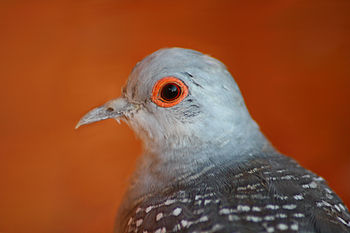 |
| Carrier Pigeon (Photo credit: Wikipedia) |
One of the earliest recorded pieces of history on the bird and sport can be traced back to 1350 B.C. which shows an Egyptian Bas-relief releasing pigeons from their cages. By the middle of the twelfth century A.D., a pigeon post with postmasters and post offices were successfully being maintained by the Caliph of Baghdad. During the historic Olympics of the Golden Age of Greece, a well-developed system of pigeon communication was being used to rush news of the events to surrounding cities. Since pigeons were fast and able to cover large distances through all sorts of weather, leading newspapers of many countries used them to carry important news and stock exchange quotations.
Although pigeons were being used quite successfully to deliver messages, the ancients knew very little about breeding, but they were thoughtful enough to keep breeding the young of the pigeons whose homing instinct were more prominent than others. As progress in breeding developed, breeders began to look more closely at carriage form, feathers, eye care etc as well as speed, endurance, and vitality when breeding their stock. From this bird, the Antwerp and Liege types were developed in Belgium which are the ancestors of most of the present day homing pigeons.
Through the advances in breeding, pigeons began to be able to fly further and faster and by the eighteenth-century pigeon racing began to grow in popularity and was extended into Belgium. In 1818 the first classic concourse in Belgium was held in Toulouse, France with thousands of birds competing. This was the predecessor of modern-day concourses in which thousands of the best birds in several states and clubs compete in the U.S. Since the object of these concourses was to see whose pigeon returned home first, the name was shifted from the "carrier" pigeon to the "Homer".
|







